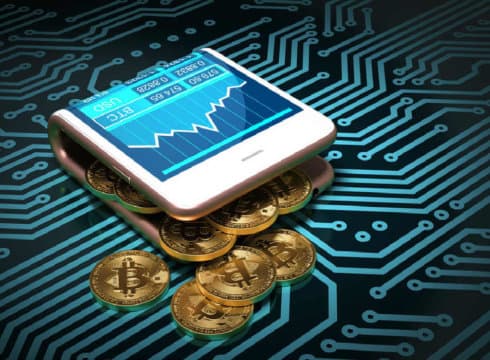From Ripples To Making ‘Crypto’-Waves: Blockchain And Digital Finance
Inc42 Daily Brief
Stay Ahead With Daily News & Analysis on India’s Tech & Startup Economy
Everyone knows somebody who refuses to transact in anything but cash. They don’t understand transacting without a physical medium; they enjoy the feeling of control and security that cash brings, as opposed to numbers changing on their phone screens.
Anecdotal evidence of a variety of different scams utilising frailties in digital payment systems further encourages this belief. Fraudulent transactions cost companies and individuals billions every year, and in 2015 losses from worldwide fraud on payment cards amounted to USD 16.31 billion. Nearer home, a digital wallet provider lost INR 19 crore due to technical glitches in its payment system.
This is why some people are loathed to transact digitally, in spite of the many benefits; even those who do transact digitally prefer bank transfers and cheques for large payments due to the perceived security these modes of payment offer. For digital payments to successfully supplant cash as a medium of transaction, it must adopt some new methods to ensure security – and this is where Blockchain comes in.
What is blockchain, anyway?
The development and popularity of cryptocurrencies like Bitcoin have made blockchain a popular term, but few are familiar with how the technology works.
Imagine if every cash note that you acquired carried with it a ledger of encrypted data, upon which the details of every prior transaction carried out through it would be stored. Further, every person who had transacted on that note would also carry the same record, which will keep getting updated through the life of that currency note in real time.
At the point that you’re receiving the note, you’ll also be able to see how the previous holder has transacted; that information would be an aid to figuring out whether that person is trustworthy enough to transact with or not. And this is the main feature and quality that blockchain technology provides.
A blockchain is a distributed database that records and maintains a list of all transactions taking place in real time. Each blockchain record is time-stamped and stored with high levels of encryption, making it tamperproof and immutable.
With these records being kept publicly and in a distributed fashion, users are assured control and security of their information. Even if malicious attacks manage to overwhelm any one particular data-block on the chain, it can be repaired from any of the other sources and continue to remain secure.
Compared to legacy systems and digital payment architectures, blockchain is exceedingly transparent, dependable, immune to technical glitches, and utterly secure.
Digital payments and blockchain – the new and improved paradigm
Financial institutions are beginning to realise the promise of blockchain technology, and successfully deploying it in various areas, ranging from pre-IPO trading platforms released by NASDAQ to cross-border payment platforms built by companies such as Ripple.
The technology is being used to optimize KYC processes, trade finance solutions, asset servicing, claim management in insurance, and post-trade solutions in capital markets. Citibank, J.P. Morgan, Goldman Sachs, and Barclays are amongst the big players driving the development of this futuristic technology. However, blockchain was built to ease and secure peer-to-peer transactions for Bitcoin; and that is where the greatest potential for it lies.
Digital payments service providers are developing blockchain to use it to secure contactless payments. Every party involved in a blockchain-enabled transaction through them will have a record of every relevant transaction that took place in the system. Both the merchant and customer will be able to know what proportion of transactions were fraudulent for the other party and can choose to do or not do business forearmed with that information.
They will also be updated in real time if there is anything unusual about a transaction that they are undertaking, and all transactions can, therefore, be validated. A combination of prior transactional history and immediate and reliable verification would provide complete security and peace of mind to everyone transacting through blockchain-enabled contactless payments.
The companies and startups looking to integrate blockchain into their payment systems are going to be able to provide truly secure and reliable digital payments that can finally replace the use of cash.
The future of digital payments brought to you by blockchain technology
Even for those who have taken to digital wallets with great aplomb, there are a plethora of use cases for which a digital wallet or mobile payment system wouldn’t even occur to them. They would rather undergo these transactions through third-party intermediaries in the legacy banking system, as they imagine these processes can provide greater security.
With the introduction of the blockchain, this entire process can be decentralised and become more secure. No longer would processing fees and intermediary costs eat up a substantial percentage of large transactions. Unlike conventional digital payments, blockchain-enabled contactless payments wouldn’t just disrupt some parts of the payment ecosystem, but revolutionise and improve every use case imaginable.
The blockchain-enabled contactless payment system is one of the best alternatives to cash, as it covers the entire transactional spectrum of payments; from high-ticket transactions to purchasing candy at the corner store, blockchain is poised to secure your assets and be more valuable than the cash in your pocket.
{{#name}}{{name}}{{/name}}{{^name}}-{{/name}}
{{#description}}{{description}}...{{/description}}{{^description}}-{{/description}}
Note: We at Inc42 take our ethics very seriously. More information about it can be found here.


